The best 65-inch TV for every budget, all tested by our reviewers
The best 65-inch 4K TVs for big-screen action

65-inch TVs are becoming more popular every year, thanks mainly to how good the bang for your buck is these days – I've tested and compared the best 65-inch TVs available today, and they offer an amazing balance of performance, features and price for any budget.
Of course, any list of the best 65-inch TVs will also include some money-no-object sets – some of the best OLED TVs for example – but even these are getting cheaper. In fact, you might be surprised by how little difference there is between these and the price of the best 55-inch TVs in many cases.
It can be tough to know which type of TV to pick, but I'm here to help. I'm TechRadar's lead TV reviewer, and our team has tested every TV on this list using both real-world testing and benchmark measurements to help you to find the perfect option.
I know what to expect from the best TVs at all kinds of price levels because I've tested so many, so my choices here balance performance and essential features with the pricing of the 65-inch TV models specifically – and I try to take real-world prices into account, not just the official prices.

I'm TechRadar's TV Hardware Staff Writer, and I've reviewed everything from budget TVs to cutting-edge OLED tech, and the most common size I test is 65 inches. Before joining TechRadar, I worked for several years at one of the UK's leading AV retailers, on everything up to custom home theater installations.
5 November 2025
Updated this guide heavily to reflect the current TV market. Made the LG C5 the 'best overall' as the LG C4's stock is now thin. Replaced the LG G5 with the Panasonic Z95B as best premium OLED. Removed the 'best for sound' category. Renamed the Samsung QN90F as 'best for bright rooms'. Updated comparison charts with more recent competitors.
The best 65-inch TVs you can buy
Why you can trust TechRadar
The best 65-inch TV overall

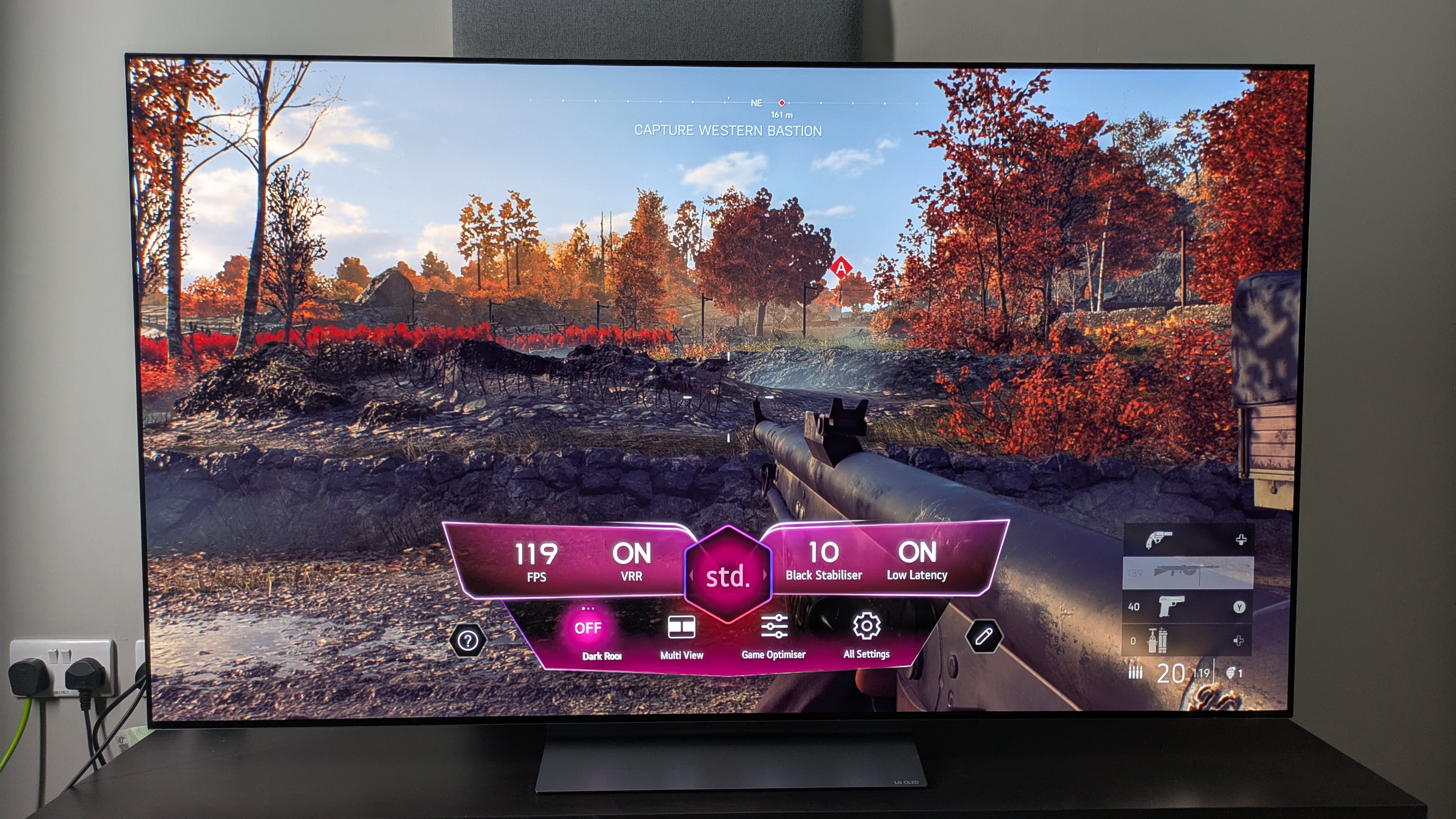



Specifications
Reasons to buy
Reasons to avoid
✅ You want a TV that covers all the bases: The LG C5 is excellent for both gaming and movies, thanks to its superb picture quality and wide range of features.
✅ You want a great gaming TV: The C5 is 4K 144Hz certified, supports every kind of variable refresh tech, and has four HDMI 2.1 ports – plus great cloud gaming options.
❌ You own the LG C4: Other than a slight brightness increase and a new smart TV OS, the C5 is identical to its predecessor, the C4.
❌You want the sound to match the picture: While the C5 delivers excellent picture quality, its built-in sound is average – a soundbar may be required for some.
The LG C-series has proven to be the jack-of-all-trades of the OLED TV world for years, and the LG C5 is no different. Of all the TVs I've tested this year, it's easily one of the most versatile, perfect for both gaming and movies.
I was seriously impressed with the C5's picture quality during my testing. Its colors are vivid and punchy, giving vibrant movies such as Elemental and Wicked pop on screen. High-contrast movies such as The Batman and Nosferatu also look fantastic, with deep blacks, a great balance between light and dark tones and brilliant shadow detail.
The C5 is an excellent gaming TV. Its four HDMI 2.1 ports support 4K 144Hz, variable refresh rate (AMD FreeSync and Nvidia G-Sync included), Dolby Vision gaming and Auto Low Latency Mode. It also delivers an ultra-low 9.2ms input lag (with Boost mode in Game Optimizer activated) for ultra-responsive, smooth gaming, I could feel in practice.
While the C5 does have setbacks such as average built-in sound quality, it's still exceptional in many areas compared with its mid-range OLED rivals, and is also the most competitively priced. If I'm recommending one 65-inch today, it's the LG C5.
The C5's predecessor, the C4, is still available in some places, but stock is now very thin. If you can get a killer deal on the C4, it's worth it – but the LG C5 now sits on the list as a worthy replacement.
Read our full LG C5 TV review
Find the best deals on LG products with our LG coupon codes.
The best budget 65-inch TV in the US





Specifications
Reasons to buy
Reasons to avoid
✅ You want a picture with great contrast: The QM7K's Halo Control tech for its mini-LED backlight limits blooming effects from light to dark areas, and combined with high brightness delivers great contrast.
✅ You're a gamer: The QM7K supports 4K at 144Hz, AMD FreeSync Premium Pro and has a respectable 1.31ms input lag time – great stats for a TV at this price.
❌ You'll be watching in a bright room: The QM7K delivers high brightness, but still suffers from screen reflections in bright rooms.
❌You want the perfect picture: The QM7K has very good picture quality overall, but some vignetting in the corners of the screen stops it from being perfect.
The TCL QM7K delivers great picture quality and a stacked feature-set at an affordable price in a 65-inch size, with prices already dropping below $1,000.
From our testing, we found that picture quality is exceptional on the QM7K, especially given its price. It delivers stunning brightness, which we measued at 2,350 nits of peak HDR brightness, and 640 nits of fullscreen brightness (in Standard Mode) – right up there with best-in-class TVs.
Its Halo Control tech limits backlight blooming despite that brightness, which is something that's often an issue on mini-LED TVs at this level. Black tones are deep, colors are vibrant, and its local dimming is precise. The only downside to note is that there's some brightness drop-off at the corners, which creates a 'vignette' effect in some bright scenes.
The QM7K joins the legion of mini-LED TV at this price range that come packed with the latest gaming features. It supports 4K at 144Hz, FreeSync Premium Pro and has a 13.1ms input lag time. This translates to extra smooth gameplay, as we discovered when running from zombies in Dead Island 2 during our testing. It also supports an impressive 288Hz at 1080p for PC gamers, too
Elsewhere, the QM7K delivers solid sound quality and uses Google TV as its smart TV platform, but where it really shines is its value. For all this at under $1,000, the QM7K 65-inch is a steal delivering serious bang for your buck.
Read our full TCL QM7K review
The best budget 65-inch TV in the UK
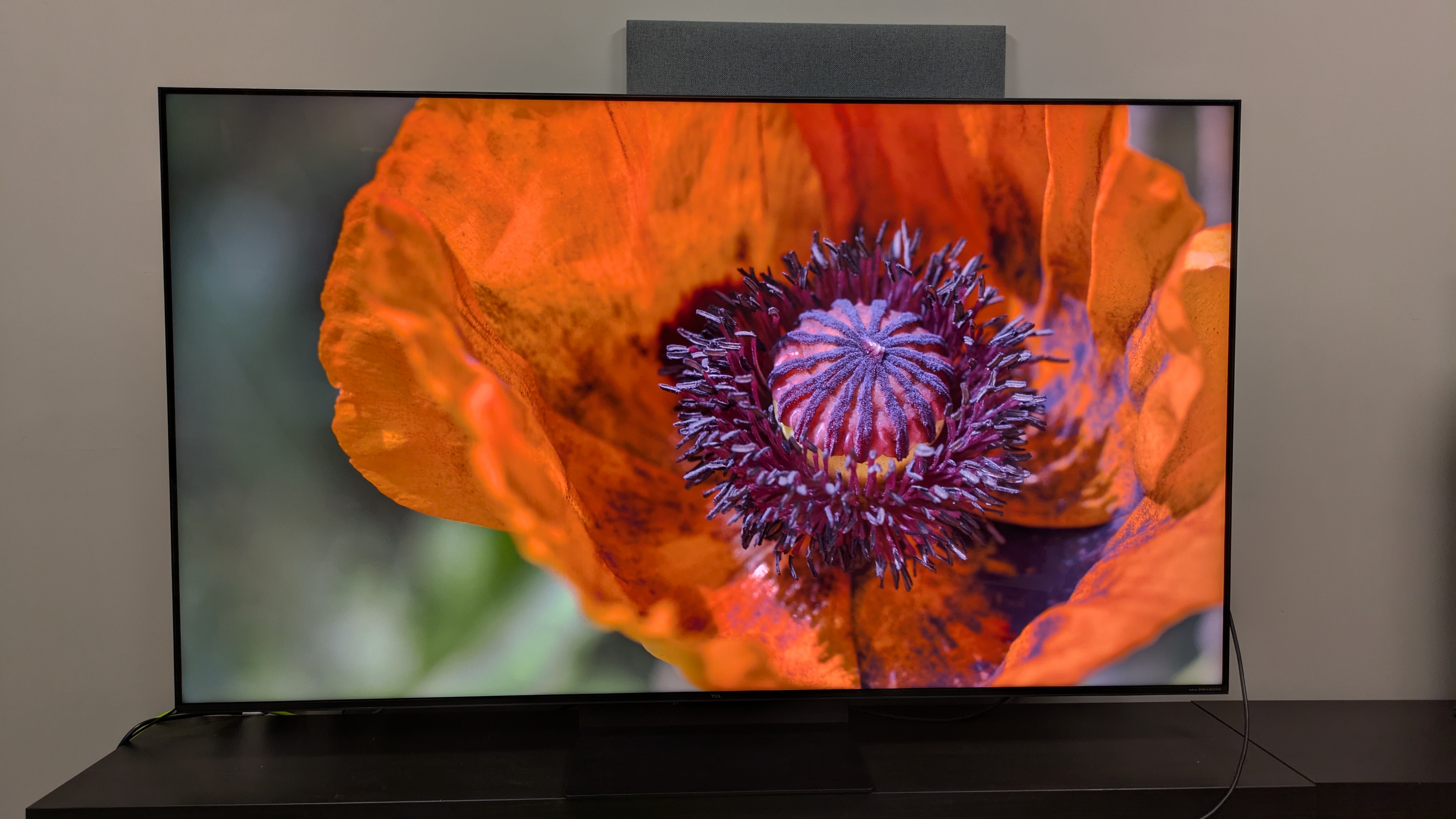




Specifications
Reasons to buy
Reasons to avoid
✅ You want bang for your buck: The C7K delivers a punchy picture, great gaming performance and more for an affordable price.
✅ You want a bright, rich picture: High brightness, dynamic colors and solid contrast – all at a budget-friendly cost.
❌ You need the best built-in sound: The C7K's sound is fine, but is lacking bass and its soundstage feels narrow.
❌You watch a lot of black and white movies: One common thing we found during testing was that the C7K's screen uniformity wasn't perfect, with brown tones creeping in on black and white movies.
The TCL C7K is the mid-range model in TCL's 2025 mini-LED TV range in the UK, but it comes at an affordable price. It has numerous features for gaming, and delivers very good picture quality for the money.
The C7K's picture demonstrates vibrant colors, aided by its high brightness, which we measured at 2,784 nits of peak brightness in HDR Standard Mode. It still hit 1,790 nits HDR peak brightness in the more natural Filmmaker Mode, which is really impressive, and gives movies irresistible vibrancy.
During testing, I was impressed by how rich the C7K's contrast was, with accurate local dimming making dark scenes from challenging movies such as The Batman look accurate, a movie I've often found to be a struggle for cheaper mini-LED TVs. Its one setback is its screen uniformity, as it struggles to accurately display the correct tones evenly in black and white movies. Other than this, its picture is hard to fault.
Once again, the C7K delivers a stacked suite of features for gaming. It supports 4K at 144Hz, FreeSync Premium Pro, and has a 13.5ms input lag time. Its performance is snappy and smooth and for the money, meaning fast paced games such as Battlefield V which I played during testing were well handled. Gamers won't be disappointed by the C7K.
While its sound quality may not be top-notch, some will find it more than adequate. But its value is where the C7K is at its strongest, offering everything discussed above for under £1,000. If you want an affordable mini-LED TV with more premium performance than its price suggests, the C7K is a superb option.
Read our full TCL C7K review
The best mid-range 65-inch TV
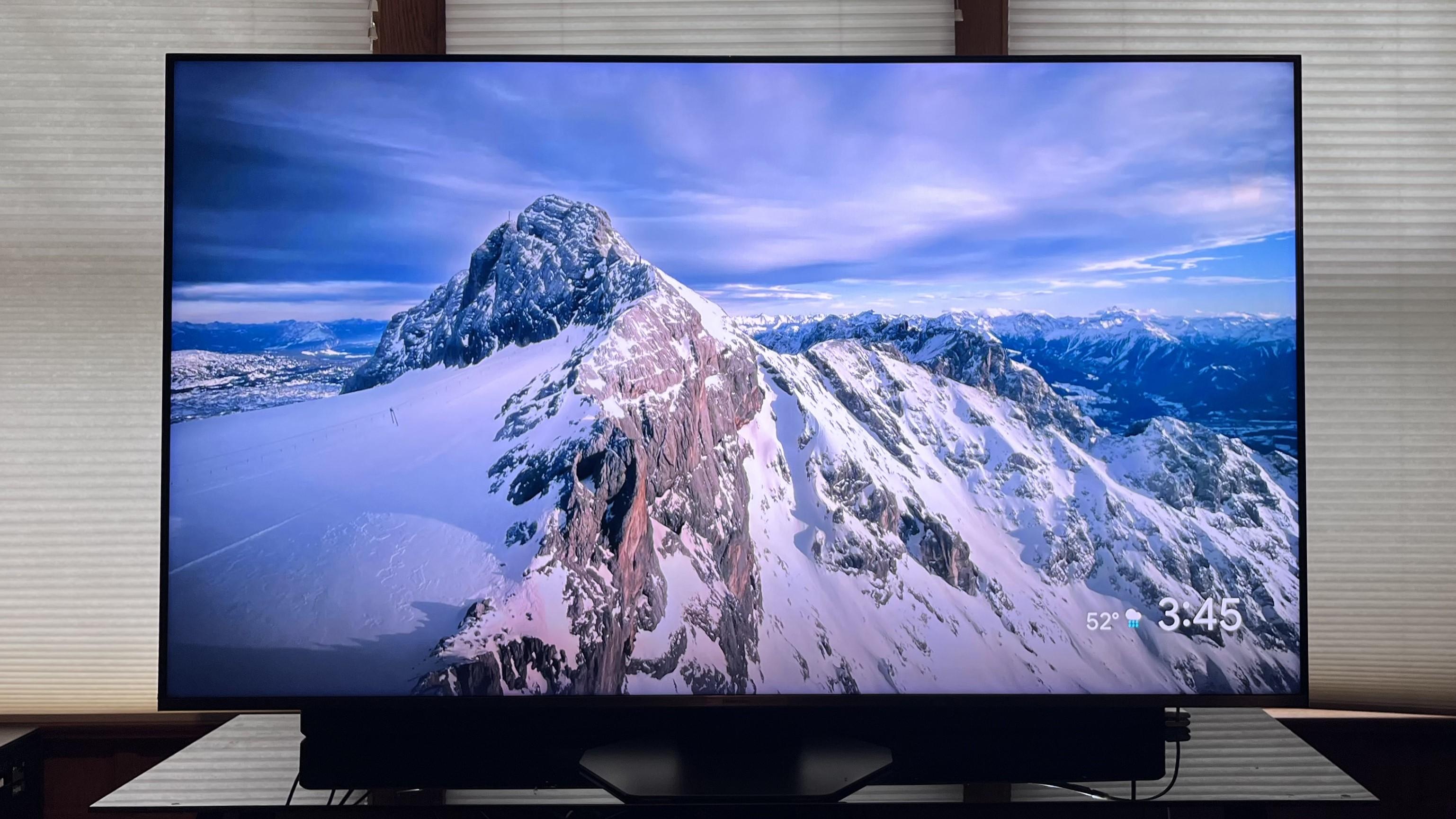




Specifications
Reasons to buy
Reasons to avoid
✅ You want a TV for a bright room: The U8QG is more than equipped to handle bright rooms, thanks to its high peak brightness and anti-reflection screen.
✅ You want a well-featured gaming TV: With 4K 144Hz, VRR, ALLM, Dolby Vision gaming and a 9.9ms input lag time, the U8QG is a superb TV for gaming.
❌ You don't want to use a soundbar: The U8QG's sound is good overall, but its built-in subwoofer rattles during intense movies, which can be distracting.
❌You need to view from multiple angles: The U8QG's picture quality suffers when viewed off-axis, which can be an issue for larger group viewing.
The Hisense U8QG is a mid-range mini-LED TV that delivers fantastic picture quality, a comprehensive list of gaming features with performance to match, and a competitive price tag.
Colors on the U8QG are bold, bright and have a "serious eye-candy quality" as we said in our review. Its local dimming is also impressive, resulting in rich contrast with deep black levels. The U8QG also has settings such as Dark Detail and Dynamic Tone Mapping which prove to be effective in giving the U8QG a picture performance boost.
Gaming has always been a Hisense U8 series strong suit and the U8QG is no different. 4K 165Hz, VRR (FreeSync Premium Pro), ALLM, Dolby Vision and HDR10+ gaming are all supported, plus it boasts an ultra-low 9.9ms input lag time.
The U8QG isn't perfect, because it built-in sound is hampered by a rattling subwoofer and off-axis viewing results in reduced picture quality, but it's strong on value. For what it delivers, the U8QG is a very well-priced TV that other mid-range sets will struggle to beat.
Read our full Hisense U8QG review
The best 65-inch premium OLED TV



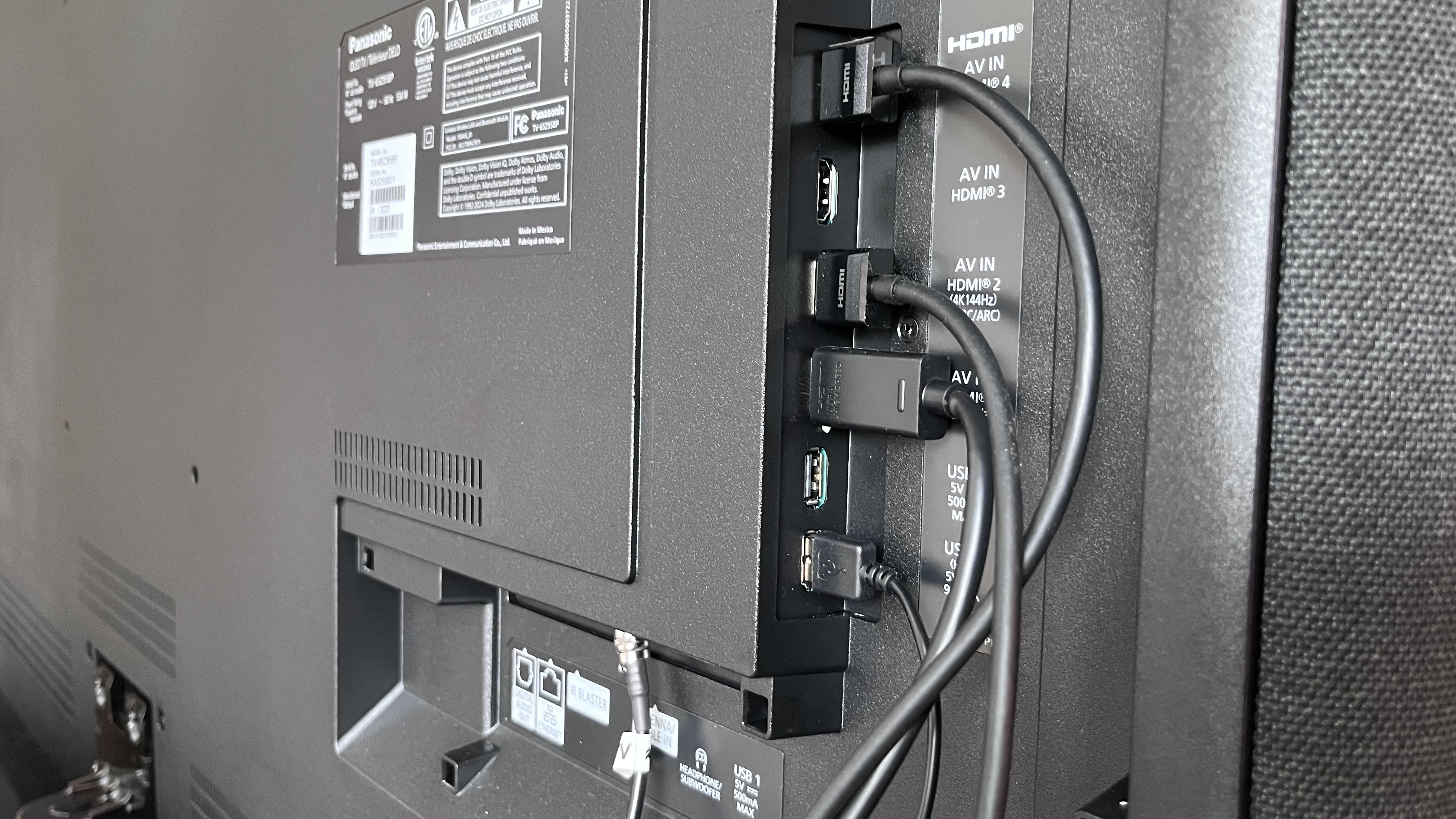


Specifications
Reasons to buy
Reasons to avoid
✅ You want superb built-in sound: The Z95B delivers powerful, immersive built-in sound that creates an engaging experience at home.
✅ You want authentic picture quality: The Z95B's picture delivers strong contrast and refined textures and details that feel accurate with any pictures.
❌ You're on a tight budget: The Z95B's premium performance comes with a price tag to match. If you want a cheaper OLED, check out the LG C5.
❌ You need a bright picture: The Z95B doesn't match the brightness levels of the rival LG G5 and Samsung S95F, meaning it can be more difficult to watch in brighter rooms.
It may not be the brightest or most feature packed premium OLED on the market but for my money, the Panasonic Z95B delivers where it really counts with staggering picture quality and engaging built-in sound.
Where the Z95B really crushes the competition is its built-in sound quality. It houses a 5.1.2 channel, 160W Dolby Atmos speaker system that is punchy, immersive and detailed. Scenes from action movies such as The Batman and Top Gun: Maverick are powerful, whereas scenes from musicals like Wicked are clear and well balanced and best of all, you don't need a soundbar: something that's a real rarity with TVs these days.
When I put the Z95B side by side with its closest rivals, the LG G5, Samsung S95F and Sony Bravia 8 II, I found my eye drawn to the Z95B over the other flagship OLEDs. It colors were natural and vibrant, its textures realistic and its contrast powerful, with rich, deep blacks. Whatever movie I displayed, the Z95B's picture looked the most accurate and was the TV I found the most engaging.
The Z95B has one quirk where its brightness in Filmmaker and Movie has been capped to 1,000 nits (intentionally) when watching footage mastered at that level. This means the Z95B in its default settings doesn't have the same vividness as its rivals, but even so, I still found I preferred the Z95B's picture – it's been capped at this level to maintain accuracy, and I love the results.
The Z95B is also a good-looking TV and has a good stock of gaming features, including 4K 144Hz, VRR, Dolby Vision gaming and a 12.7ms input lag time, and in an exciting move, its priced much closer to its rivals (in the UK, it's cheaper!), meaning it becomes an even easier recommendation. Those looking for a best-in-class 65-inch OLED, look no further.
Read our Panasonic Z95B review
The best 65-inch TV for bright rooms



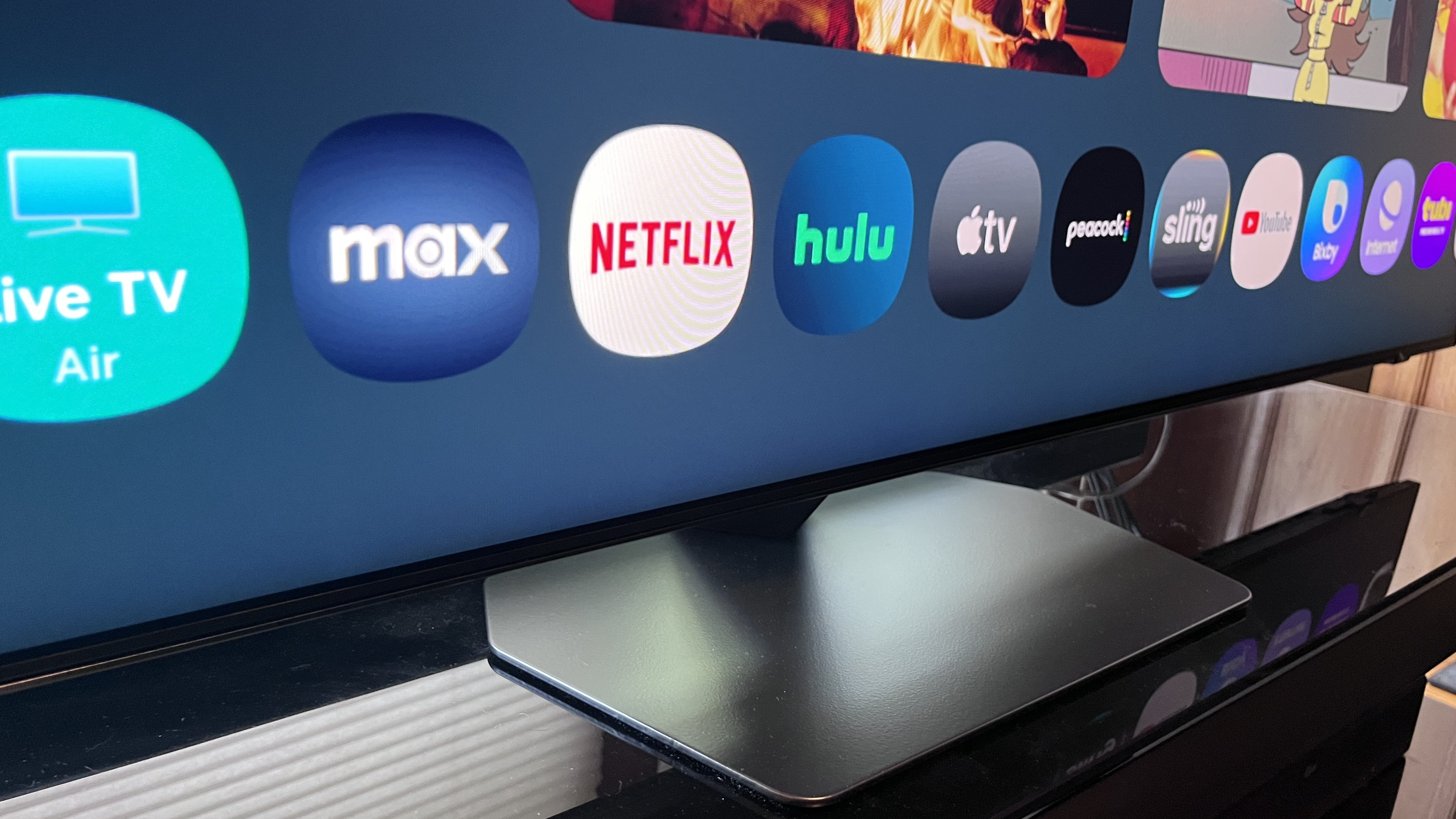

Specifications
Reasons to buy
Reasons to avoid
✅ You want to watch in a bright room: The combination of the QN90F’s bright picture and matte Glare Free screen means no distracting mirrored screen reflections when viewing in bright rooms.
✅ You're a gamer: The QN90F has four HDMI ports with 4K 165 Hz and FreeSync Premium Pro support, and its ultra-low 9.5ms input lag means fast and responsive gaming.
❌ You’re on a tight budget: Other mini-LED TV makers like Hisense and TCL offer equally bright models at a much lower cost, though they lack the QN90F’s Glare Free screen.
❌ You want Dolby Vision HDR: Like all Samsung TVs, the QN90D doesn't support Dolby Vision HDR.
The Samsung QN90F is a great TV for gaming and sports but where it succeeds most is in bright rooms, thanks to its high brightness and its anti-reflection screen.
While the QN90F doesn't deliver the brightness of some cheaper mini-LED TVs, hitting 2,086 nits peak HDR brightness to the TCL QM8K's 2,268 nits, the TCL C8K's 3,050 nits and the Hisense U8QG's 3,337 nits, the QN90F utilizes a Glare Free anti-reflection screen, which even diffused light from a lamp directly in front of the screen during our testing, to become truly brilliant for bright room viewing.
It wasn't just brightness in the QN90F's picture that impressed us during our testing. It delivered rich colors, stunning shadow detail and excellent highlights which worked great in snowy scenes from movies such as Mountainhead. And, the QN90F showed almost no backlight blooming, often a common occurrence in mini-LED TVs.
The QN90F is also a fantastic TV for gaming. It carries the full suite of features we look for including 4K 165Hz, FreeSync Premium Pro and an ultra-low 9.5ms input lag time.
It may be one of the more pricier mini-LED TVs on the market, much moreso than rival TCL and Hisense sets, but the QN90F delivers a premium mini-LED experience and if you're wanting a TV for a bright room, this is it.
Read our full Samsung QN90F TV review
The best 65-inch TV 2025: Comparison charts
Below is a summary of the scores for the areas we assess TV in, with each entry in the list featured. You can re-arrange the order by clicking the column headers.
We also measure TVs using objective measurements as part of our TV testing process. These measurements are taken using professional equipment and software. You shouldn't buy a TV solely based on its test results, but they can be a useful, quick comparison between different models. The first results below are for brightness, measured in both SDR and HDR, in both small and fullscreen areas of the screen.
Next up is our results for how much of the P3 color space each TV covers, with a maximum of 100%. The BT.2020 color space results are also included, but this is more widely used in professional video.
Input lag is the timing difference between when an image enters a TV's HDMI port to when its displayed on screen. This is especially important for gaming as the lower the delay between pressing a button and the action happening, the smoother and more responsive the performance. This test is recorded using a piece of equipment that displays a blinking image and then records the input time when held to the screen.
Also consider
Samsung S95F OLED
The flagship Samsung S95F delivers great picture quality and includes an effective anti-glare screen that eliminates mirror-like reflections – in a bright room, it will be preferable to the Panasonic Z95B. It's also well equipped for gaming and has a sleek, modern design. Still, all things being equal, I prefer the Panasonic – but there are very good reasons to buy the Samsung S95F.
Here's our Samsung S95F review
Amazon Fire TV Omni Mini-LED: Amazon's first mini-LED TV, the Omni Fire TV Mini-LED delivers great value, offering excellent picture quality and performance, particularly for sports, along with a comprehensive suite of smart and gaming features at a competitive price. It's just beaten to the list by the TCL QM7K and TCL C7K.
Here's our full Amazon Fire TV Omni Mini-LED review.
Roku Pro Series
Roku’s top TV is a mini-LED model that can regularly be found at a discount. With 4K 120Hz support and ultra-low input lag, the Pro Series is a very good option for gaming, and it also has a premium design and great sound quality from its front-firing built-in speakers. Another benefit is the Roku smart TV interface, which is more streamlined and user-friendly than the Amazon Fire TV smart interface.
Here's our full Roku Pro Series review.
Sony Bravia 8 II
The Bravia 8 II is Sony's flagship OLED TV for 2025. It uses a QD-OLED panel for enhanced brightness and contrast and delivers rich colors. Its clear, impactful built-in sound is also better than you'll find on most TVs. Despite being a flagship OLED, the Bravia 8 II doesn't hit the same brightness levels as rivals from LG and Samsung, which is the main reason why it didn't make our list. It is still a brilliant TV in its own right, however.
Here's our full Sony Bravia 8 II review
Samsung QN80F mini-LED TV
The Samsung QN80F delivers a solid picture and has a good range of features at a decent price. But the mini-LED TV market is extremely competitive, and at this level, the TCL QM7K, TCL C7K and Hisense U8QG provide better bang for your buck than the Samsung QN90F.
Here's our full Samsung QN80F review
TCL QM8K mini-LED TV
The TCL QM8K is the successor to the TCL QM851G (featured in this section further down) and delivers high brightness and excellent overall picture quality. Its biggest upgrade over its predecessor is an improved viewing angle. The QM8K launched at a highly competitive price and is excellent value for money.
Here's our full TCL QM8K review
Samsung S90F OLED TV
The Samsung S90F delivers excellent overall picture quality and gaming features at a mid-range price for an OLED TV. While it is a superb TV, we feel the LG C5, its nearest competitor, delivers more features and slightly better value at 65-inch. But, do expect some big deals with the 65-inch S90F over Black Friday.
Here's our full Samsung S90F review
Sony Bravia 8
The Sony Bravia 8 is another OLED TV with great sound quality, though it lacks the full built-in 5.1.2-channel Dolby Atmos speaker system the Panasonic Z95A (#6 on our list) provides. Its picture isn’t as bright as what you get with the Z95A, but it costs a fair amount less.
Here's our full Sony Bravia 8 review
Sony Bravia 9
Sony’s flagship TV is a mini-LED model with excellent picture and sound quality and a premium design that will make it look good in your living room even when it's turned off. The only real downside to the Bravia 9 is its high price.
Here's our full Sony Bravia 9 review
How to choose the best 65-inch TV
Should I buy a 65-inch TV?
We’ve answered this question in a much more detailed guide elsewhere on TechRadar, but the short answer is: yes, if you can afford to.
Basically, a bigger TV is often a better TV and, as mentioned earlier, these large-scale displays typically boast the best specification when it comes to new tech and useful features.
As 65-inch models are becoming increasingly popular, they’re also becoming less expensive, and we’d almost always recommend parting with a little bit more money to enjoy the benefits of such an impressive screen size.
Which is the best 4K TV brand?
The question of the best 4K TV brand (for 65-inch models, in particular) is a difficult one to answer when there’s so many great models out there. Displays from the likes of LG, Sony and Samsung regularly make this list, but they’re often joined by equivalent models from brands like Hisense and Panasonic.
A better question might concern what to look for when buying a 65-inch 4K TV, to which we’d say picture quality, app support, other handy bells and whistles like voice control and, of course, price.
Features like HDR support, Dolby Vision and Atmos, OLED panels and the like can be real differentiators, too, when it comes to finding the 65-inch 4K TV with the best viewing experience, though it’s no surprise that the more of these extras a display has, the more expensive it tends to be.
What is 4K resolution?
4K is, essentially, an ultra-high-definition screen resolution. Also called UHD or 4K UHD, the display technology has become the default screen resolution across all of the TVs that you’re likely to see in stores today – as well as many PC monitors, too.
The very best UHD TVs pack over eight million pixels in their high-res displays – that’s four times the amount you’ll find on the Full HD panels in today's small TVs.
You don’t necessarily need access to 4K entertainment content to enjoy the benefits of 4K resolution, either, since many of the best 4K TVs – i.e. most of the 65-inch displays on this list – boast impressive upscaling technologies that bolster content filmed in HD.
The only displays which sport a sharper picture are the 8K variety – though, being a still-new technology, choice in that department is much more limited and, naturally, 8K models are far more expensive.
4K resolution is increasingly common for new releases on the best streaming services, and obviously is needed to take advantage of the best 4K Blu-ray players. The PS5 and Xbox Series X consoles are also both built around 4K, so we focus on having 4K TVs in our list of the best gaming TVs.
Should I choose OLED or mini-LED?
Whether you should buy OLED or mini-LED depends on your living situation, but most importantly your personal preference. Both types of tech feature heavily in our list!
OLED is a type of panel that uses self-emitting pixels allowing for greater control of the contrast (because each pixel can be turned off individually) which results in deeper black levels and contrast, and arguably bolder colors. Generally, OLED TVs much dimmer than mini-LED TVs, and can struggle in brighter rooms where reflections are likely, unless you opt for more premium OLEDs such as the LG G5 and Samsung S95F.
Mini-LED is a type of backlight that uses (you guessed it) tiny LEDs to allow for greater light control and dimming compared to standard LCD TVs. Mini-LED TVs tend to offer significantly more brightness than most TVs, resulting in brighter pictures and colors. Although their black levels aren't quite as accurate as OLED (especially in more mid-range models), they're still a step-up from LCD and QLED TVs. The TCL QM7K/C7K and Hisense U8QG are examples of mini-LED TVs on this list.
In a 65-inch size, both these technologies work well, though you can get a mini-LED TV for a far lower price in a 65-inch size compared to an OLED – though premium mini-LED sets cost the same as elite OLED TVs.
It depends on your budget, and how bright your room is. A budget OLED TV, in particular, will have a much harder time beating reflections during daytime sports viewing than a similarly priced mini-LED will. But the OLED will be more cinematic.
What gaming features should I look for in a 65-inch TV?
What gaming features you're looking for in your TV depends on your gaming device, whether it's a console (PS5 or Xbox Series X) or PC. There are some fundamental gaming features that you should be on the look out for however.
Ideally, you'll want 4K 120Hz support, a higher refresh rate that is supported on current gen consoles and PC. You'll also want Variable Refresh Rate (VRR), which allows the display to adjust its frame rate according to the source for smoother gaming, and Auto Low Latency Mode (ALLM), a mode that optimizes a displays' settings to reduce input lag and insure a smooth experience.
For these features, you'll need HDMI 2.1 ports. Ideally, you'll want four if you have multiple consoles (the LG C5 and Samsung QN90F are two TVs on this list) but most TVs come with two.
As for more device-specific features, if you have an Xbox Series X or PC, you'll want Dolby Vision gaming (the PS5 doesn't support Dolby Vision) as this will add an extra dimension to your game's picture quality (it's worth noting only specific games support Dolby Vision).
If you want to use your TV for PC gaming, you'll want to look for even higher refresh rates such as 144Hz as this will ensure even better response times. If you have an Nvidia GPU, you should look strong at LG TVs, which have G-Sync included. Many TVs support AMD FreeSync.
How we tested the best 65-inch TVs
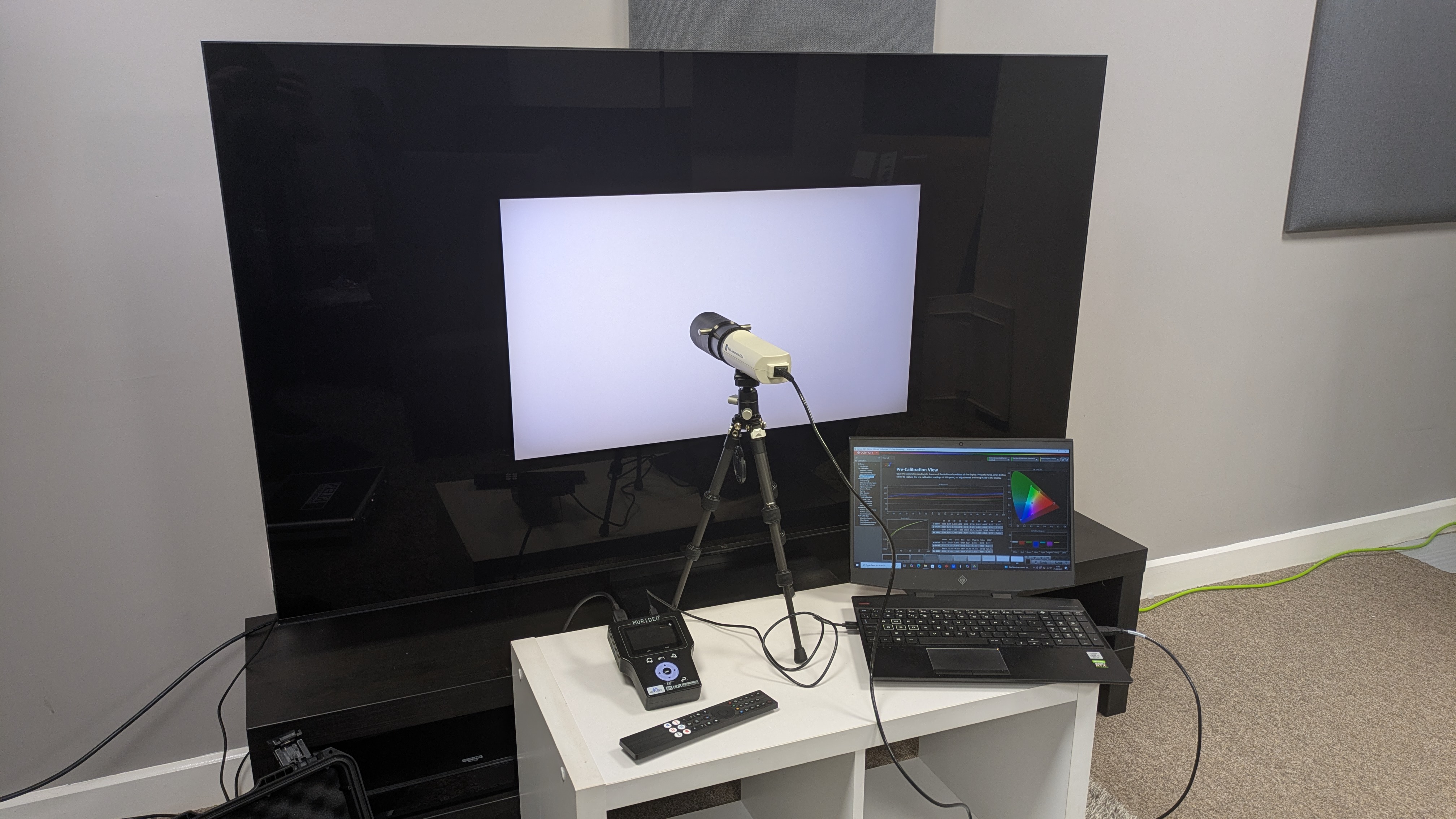
When we test the best 65-inch TVs, we structure our tests around the same criteria found throughout our reviews such as picture quality, gaming performance, and value for money. The TVs are tested using both objective measurements and subjective impressions.
Starting with picture quality, we’ll cycle through the TV’s preset picture modes such as Standard and Movie to see which is most accurate. We’ll then play a variety of sources including 4K Blu-ray and streaming, HD Blu-ray and streaming, and lower-resolution sources to test upscaling, which is important on a larger screen size such as a 65-inch TV.
Testing picture quality on 65-inch TVs, we look at how well the panel, particularly on LCD models, handles black uniformity (the ability to evenly display dark tones across the screen) as larger LCD screens tend to struggle with this. We also evaluate how well a 65-inch screen maintains contrast and color accuracy from off-center seats, which is another variable with LCD-based TVs.
For our objective tests, we use specialized equipment including a colorimeter to measure the patterns displayed by a test pattern generator and record the results with Portrait Displays’ Calman calibration software.

The first area we test is brightness using different-sized white windows such as 10% (for HDR highlights) and full-screen brightness. A 10% window will indicate what peak brightness to expect and also demonstrate a TV's effectiveness in reproducing highlights from HDR sources. The 100% window will demonstrate how a TV can maintain brightness levels across the entire screen, important for content like sports, and also tell us how it will handle reflections. We also use these brightness tests to compare a set’s measured brightness to the brightness claims made by manufacturers. When we test brightness, the measurements are made in a light-controlled room to prevent other light sources from skewing the results.



Another area we test is color reproduction with both HDR and SDR sources, looking at color accuracy and maximum color gamut coverage. We also test grayscale accuracy to see how effectively a TV reproduces grayscale steps in the full contrast range from black to white.

For gaming, we use a Leo Bodnar 4K HDMI Input Lag Tester to test how much latency is added by each TV, comparing results in Standard and Game Mode, which typically shows the lowest amount. We’ll also look at each TV’s gaming performance and features such as VRR, ALLM, and 4K 120Hz refresh rate.
We always aim to keep tests and conditions as consistent as possible, but it’s worth noting that some of our reviewers have different setups, though our writers will have similar testing equipment to achieve the same level of accuracy.
The latest updates to this best 65-inch TVs guide
5 November 2025
Updated this guide heavily to reflect the current TV market. Made the LG C5 the 'best overall' as the LG C4's stock is now thin. Replaced the LG G5 with the Panasonic Z95B as best premium OLED. Removed the 'best for sound' category. Renamed the Samsung QN90F as 'best for bright rooms'. Updated comparison charts with more recent competitors.
26 August, 2025
Replaced the Panasonic Z95A with the newer Panasonic Z95B as our 'Best for sound' choice, based on recent testing.
6 August 2025
Added in comparison charts showing score comparisons of each TV on key review areas and test results comparisons for brightness, HDR gamut and input lag. Updated our list of other TVs to consider, and TVs coming soon.
Read more updates
30 July 2025
Replaced the Hisense U7N with the TCL C7K as best budget US. Replaced the TCL C805 with the TCL C7K as best budget UK.
1 July 2025
Replaced the Samsung QN90D with the Samsung QN90F, a newer model with a new Glare Free screen.
28 May 2025
Replaced the Samsung Q80D with the Hisense U8QG as the 'best mid-range TV'.
29 April 2025
Replaced the Samsung S95D with the LG G5 as 'best premium OLED' due to the latter's increased brightness and other features. Added LG C5 to 'Also Consider' section. Removed the LG G4 and 'best for wall-mounting' category. Removed LG's OLEDs from 'New TVs coming in 2025' as they feature elsewhere in this guide now.
3 April 2025
Added new Sony and Hisense TV info to 'Coming in 2025' section; added new models to 'Also consider' section.
6 March 2025
Checked all products against our latest reviews, and added more products to our list of other options to consider. Added the quick list into this guide, and added some new information to the FAQ section.
6 February 2025
Introduced a gallery of images for each entry on this list. Put in a 'New TVs for 2025' section listing news of the models expected this year that could end up on this list.
10 January 2025
Replaced the Samsung S90c with the LG C4 as the best 65-inch TV overall due to the S90C's low stock levels. Deleted the best gaming TV category.
12 December 2024
Added Also consider section.
27 November 2024
Replaced the Amazon Omni QLED with the TCL C805 as the best budget (UK) option due to the latter's mini-LED panel and greater number of gaming features.
25 October 2024
Replaced the Sony A80L with the Panasonic Z95A as 'best OLED TV for sound'
26 September 2024
Replaced the Samsung S90C with the Samsung S90D as 'best for sports'
29 August 2024
Replaced the LG G3 with the LG G4 as 'best for wall-mounting'
1 August 2024
Replaced the Hisense U8K with the Samsung Q80D as 'best mid-range'
2 July 2024
Introduced Hisense U7N as 'best budget (US). Amazon Omni QLED became 'best budget (UK)'.
4 June 2024
Replaced Samsung QN90C with LG OLED C4 as 'Best gaming TV.' Added Samsung QN90C as 'Best TV for sports.'
7 May 2024
Replaced Samsung S95C with the Samsung S95D as 'Best premium OLED' due to improved features over the S95C.
27 February 2024
Expanded the 'How We Test' section to explain in more detail how we test these TVs.
26 January 2024
Updated FAQ's section with 'what TV's are coming in 2024?' section, looking ahead to what new TVs we're most excited for.
19 November 2023
Added in 'Buy it if' and 'Don't buy it if' boxes for each entry to summarize pros and cons for quick reading
14 November 2023
Replaced Sony A95K with Samsung S95C and re-named category 'best premium OLED'. Replaced Samsung QN900B with Samsung QN900C as best 8K TV. LG G3 became 'best TV for wall-mounting'.
3 October 2023
Swapped LG's C3 for Samsung's S90C as best OLED TV overall, replaced the TCL QM8 Class with Amazon's Fire TV Omni QLED as the best budget buy, added Hisense's U8K in replace of Samsung's BU8500 and removed Samsung's S95C for LG's G3 as brightest OLED.
26 June 2023
Added this new 'Latest updates' section to help readers know how we've changed the guide recently. Checked all products against our latest reviews.
30 May 2023
Checked list of products against our latest reviews. Added more about how we test TVs to the introduction.
28 April 2023
Reordered products to reflect latest recommendations. Added new easier navigation features.
Sign up for breaking news, reviews, opinion, top tech deals, and more.

James is the TV Hardware Staff Writer at TechRadar. Before joining the team, he worked at a major UK based AV retailer selling TV and audio equipment, where he was either telling customers the difference between OLED and QLED or being wowed by watching a PS5 run on the LG 65G2. When not writing about the latest TV tech, James can be found gaming, reading, watching rugby or coming up with another idea for a novel.
- Al GriffinSenior Editor Home Entertainment, US
- Matt BoltonManaging Editor, Entertainment








